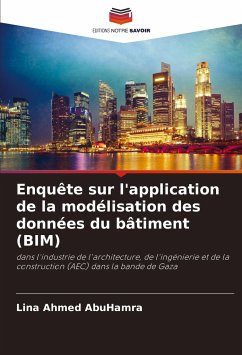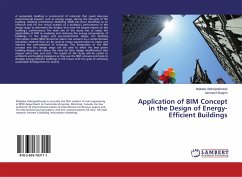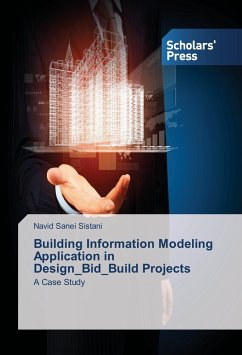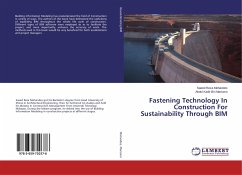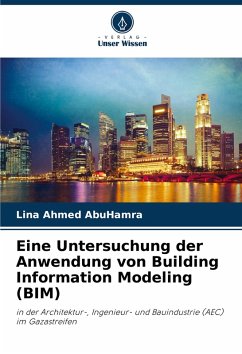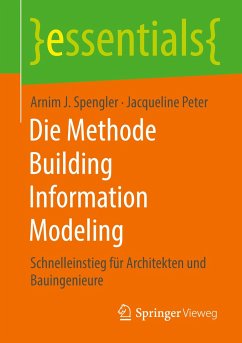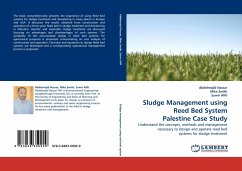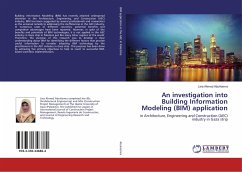
An investigation into Building Information Modeling (BIM) application
in Architecture, Engineering and Construction (AEC) industry in Gaza strip
Versandkostenfrei!
Versandfertig in 6-10 Tagen
46,99 €
inkl. MwSt.

PAYBACK Punkte
23 °P sammeln!
Building Information Modeling (BIM) has recently attained widespread attention in the Architecture, Engineering, and Construction (AEC) industry. BIM has been suggested by several professionals and researchers as the universal remedy to addressing the inefficiencies in the AEC industry. In numerous cases of different countries, potential benefits and competitive advantages have been reported. However, in spite of the benefits and potentials of BIM technologies, it is not applied in the AEC industry in Gaza strip in Palestine just like many other regions of the world. Therefore, the purpose of ...
Building Information Modeling (BIM) has recently attained widespread attention in the Architecture, Engineering, and Construction (AEC) industry. BIM has been suggested by several professionals and researchers as the universal remedy to addressing the inefficiencies in the AEC industry. In numerous cases of different countries, potential benefits and competitive advantages have been reported. However, in spite of the benefits and potentials of BIM technologies, it is not applied in the AEC industry in Gaza strip in Palestine just like many other regions of the world. Therefore, the purpose of this research was to develop a clear understanding about BIM for identifying the different factors that provide useful information to consider adopting BIM technology by the practitioners in the AEC industry in Gaza strip. This purpose has been done by achieving five primary objectives to help to reach to successful BIM-based workflow implementation.



